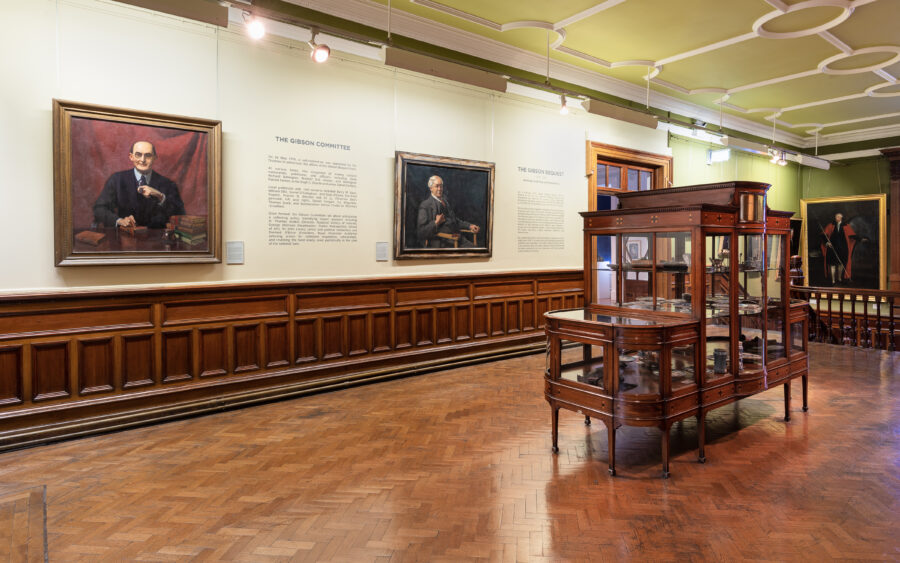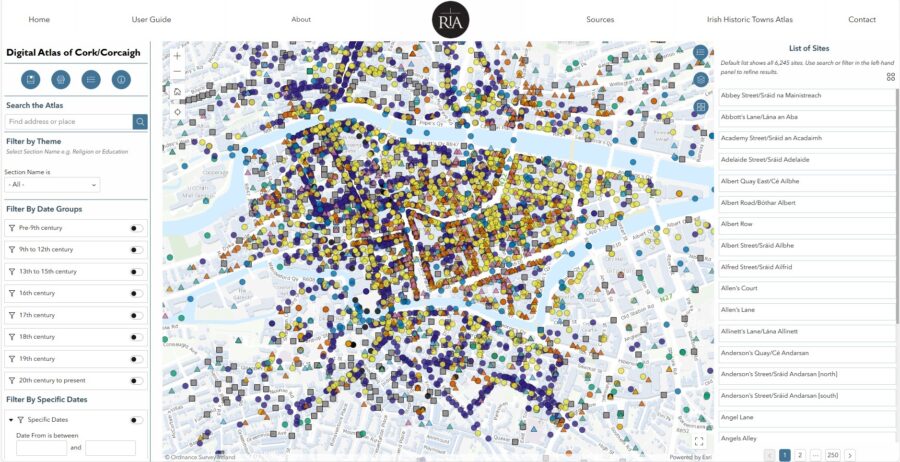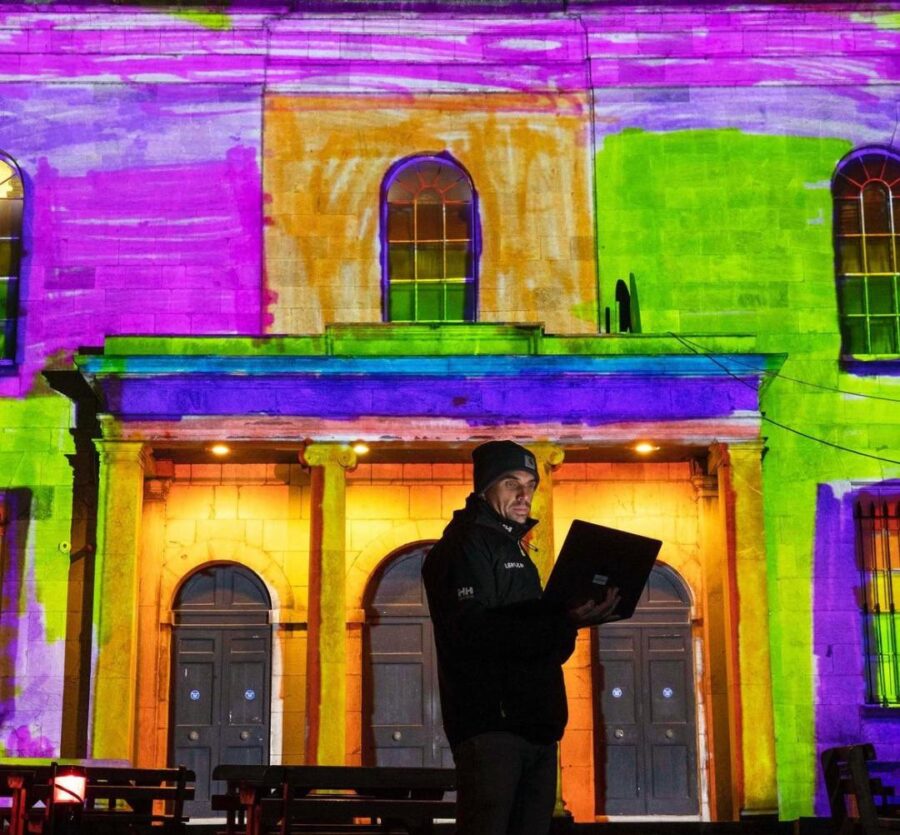
Kieran’s Our City, Our Town Article,
Cork Independent, 25 January 2024
Making an Irish Free State City – The Gibson Bequest
The Crawford Art Gallery’s website leads with a focus of the gallery at present being positioned in a series of important heritage buildings, sections of which date back to the early eighteenth century right in the heart of Cork city. The gallery is in need of significant enhancement and upgrading to meet the evolving demands of a “dynamic national cultural institution”. Works are to begin this year to provide significant restoration value, new additional exhibition and public circulation areas, a new learn and explore facility, significant storage for the National Collection at Crawford, a new entrance, and a dramatically improved public realm.
There are many curios in the Crawford Art Gallery – its exquisite set of Antonio Canova sculptures and paintings within its collections make for great viewing and scholarly output. The gallery opened in 1885 and was built on the generous financial support of William Horatio Crawford. The next generous sponsor has for the most part fallen out of Cork memory and that is the name of Joseph Stafford Gibson who provided finance through his will in creating the basis for a fund to buy paintings from 1919 onwards. The year 1924 – one hundred years ago – was a key year where the purchasing plan came into effect for the bequest.
Born near Kilmurray in 1837, Joseph inherited a small income which enabled him to devote his life to art studies. He went to Spain in 1878. and lived a lonely life in Madrid until his death in 1919. He was an artist and a collector of Works of art, and by all accounts had got together a comprehensive collection of paintings, prints, photographs, books, manuscripts, coins, antiques, and curios.
By Joseph’s will read in May 1919 he left £14,790 to the Crawford School of Art in Cork. Most of the legacy was to be spent in buying works of art for the Cork galleries, and to assist art students of special promise, who were of Munster birth, to travel and study in Europe. With this bequest, under wise direction from Irish experts, more than a hundred paintings in oils or water colour, and many drawings and sculptures have been acquired for the Cork gallery and are now on view there.
The Irish War of Independence and Civil War initially slowed down any processes of acquisition being put in place. It was to take almost five years before a strategic acquisition programmed was put in place.
One hundred years ago, on 15 January 1924 the Cork Examiner published the minutes of the Gibson Bequest sub-committee meeting of 14 January 1924. Draft regulations had been prepared by the Chairman Mr J J O’Connor setting out the procedure concerning the purchase of works of art under the terms of the bequest be approved. Enquiries had already been made regarding the acquisition of pictures by Jack Butler Yeats and Seán Keating. A painting entitled Sasha Kropotkin by Gerard Kelly of the Royal Hibernian Academy was to be purchased for £250. Gerard Kelly was an English painter in oil of portraits and landscapes. During his travels he painted some of his most characteristic figure studies. He became renowned for his portraits of elegant women, his technical genius and colourful, extensive subject matter. Sasha Kropotkin was the daughter of the anarchist, Prince Peter Kropotkin, and wife of the Russian revolutionary Boris Lebedev.
The draft Gibson Bequest regulations regarding the purchase of works of art were set out as follows: Purchases needed to be confined to the original works in the following: (a) oils, (b) water colours, (c) pastel, (d) drawings or studio» in chalk, pencil, crayon or pen and ink, (a) etchings, (f) wood cuts, (g) silver point, (n) dry point, (i) mezzotint, (j) sculpture, but that it be the rule not to purchase works in plaster, unless in exceptional circumstances, on account of intrinsic merit, and then only with the intention of having them cast in permanent material; (k) decorative art, e.g. goldsmiths and silversmith’s work, stained glass and wood-carving.
No purchase could be made by the committee which was not approved by selected advisers or a majority of such. Such advisers could be selected for the special purpose to be sent to exhibitions at the great art centres to select works for purchase under the terms of the bequest. Advisors were to submit a signed report with all recommendations for the purchase of works of art. Purchases were to be as far as possible in sequence, as portrait, subject picture, landscape, and sculpture. The recommendations of the advisors with respect to any purchase were to be subject to the approval of the Gibson Bequest sub-committee.
The Chairman J J O’Connor noted at the meeting that the intention of the committee was to make their gallery a real first-class art gallery through making purchases of first class specimens.
As the years progressed, paintings from British and French contemporary artists were bought and now form part of the core of the collections of the Crawford Art Gallery. Local artists were also enabled to travel afield to such artist hubs such London, Madrid, Paris and Rome.
Indeed, an article the Cork Examiner for 27 June 1928 notes the acquisition of many works arising from the Gibson Bequest from artists such as William G Barry, Philip Connard, Hughes de Beaumont, John Arnesby Brown, James Humbert Craig, Edward Montgomery O’Rorke Dickey, Norman Garstin, Nathaniel Grogan, Paul Henry, Nathaniel Hone, Seán Keating, Gerald F Kelly, Frank McKelvey, Sir John Lavery, William John Leech, Daniel McDonald, David Muirhead, Diarmuid O’Brien, Walter F Osbourne, Miss Annie St J Partridge, David Richter, Algernon Talmadge, Henry Jones Thaddeus, David Albert Veresmith and Leo Whelan. Many of the artists above were household names in the early twentieth art world in Britain and Ireland.
Caption:
1237s. Cabinet of Gibson Bequest Curiosities, May 2019 (picture: Crawford Art Gallery, Cork. Photo: Jed Niezgoda).



